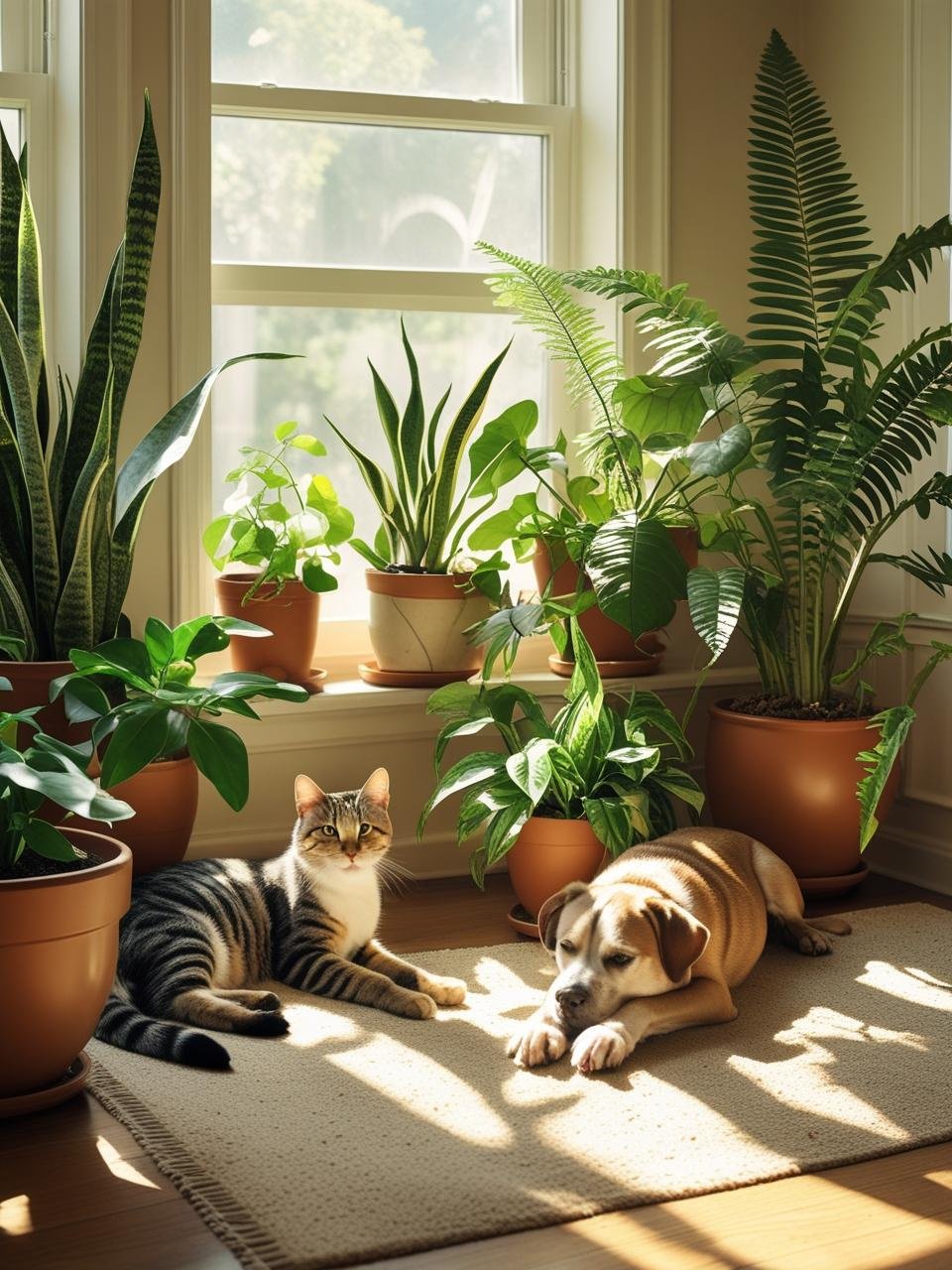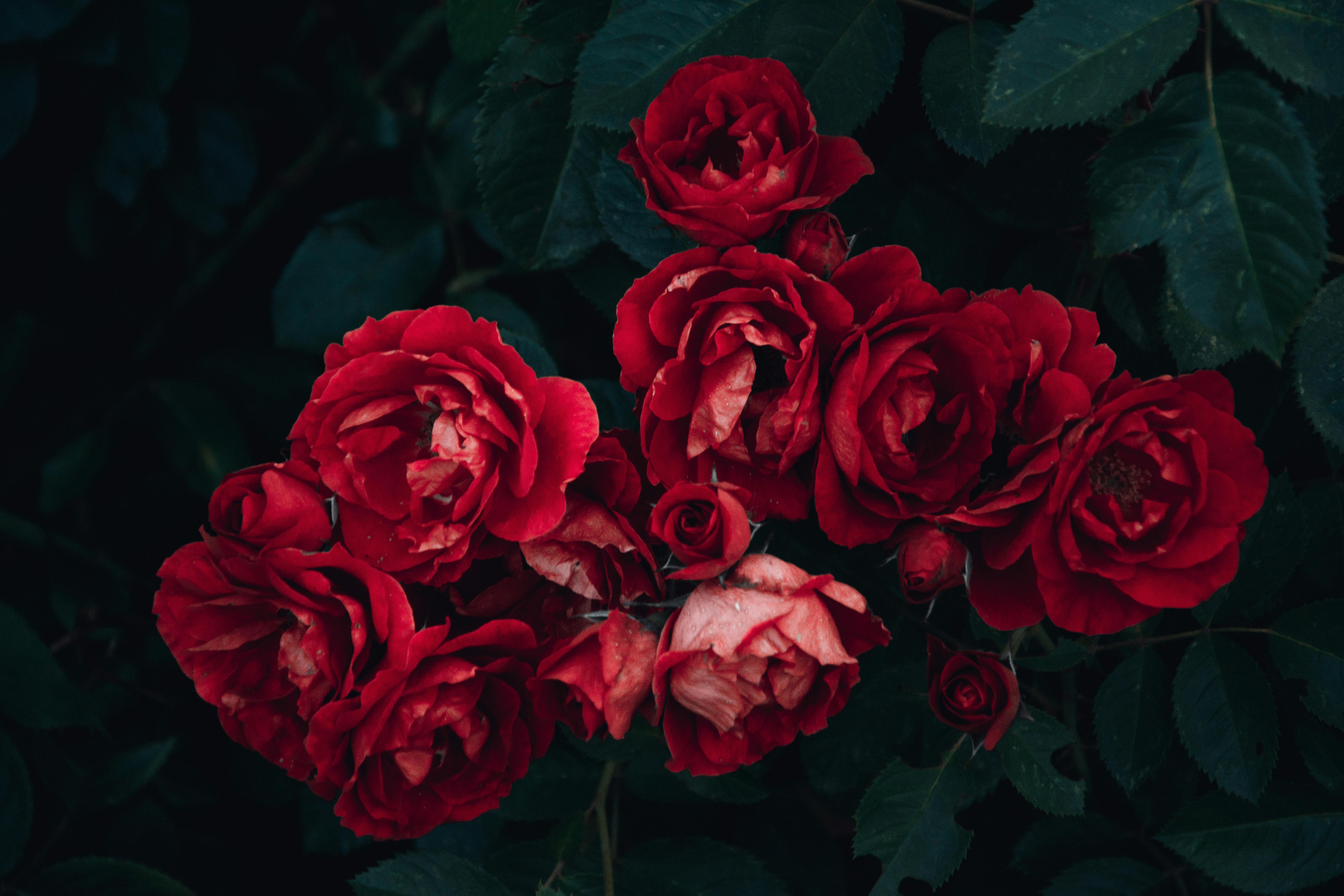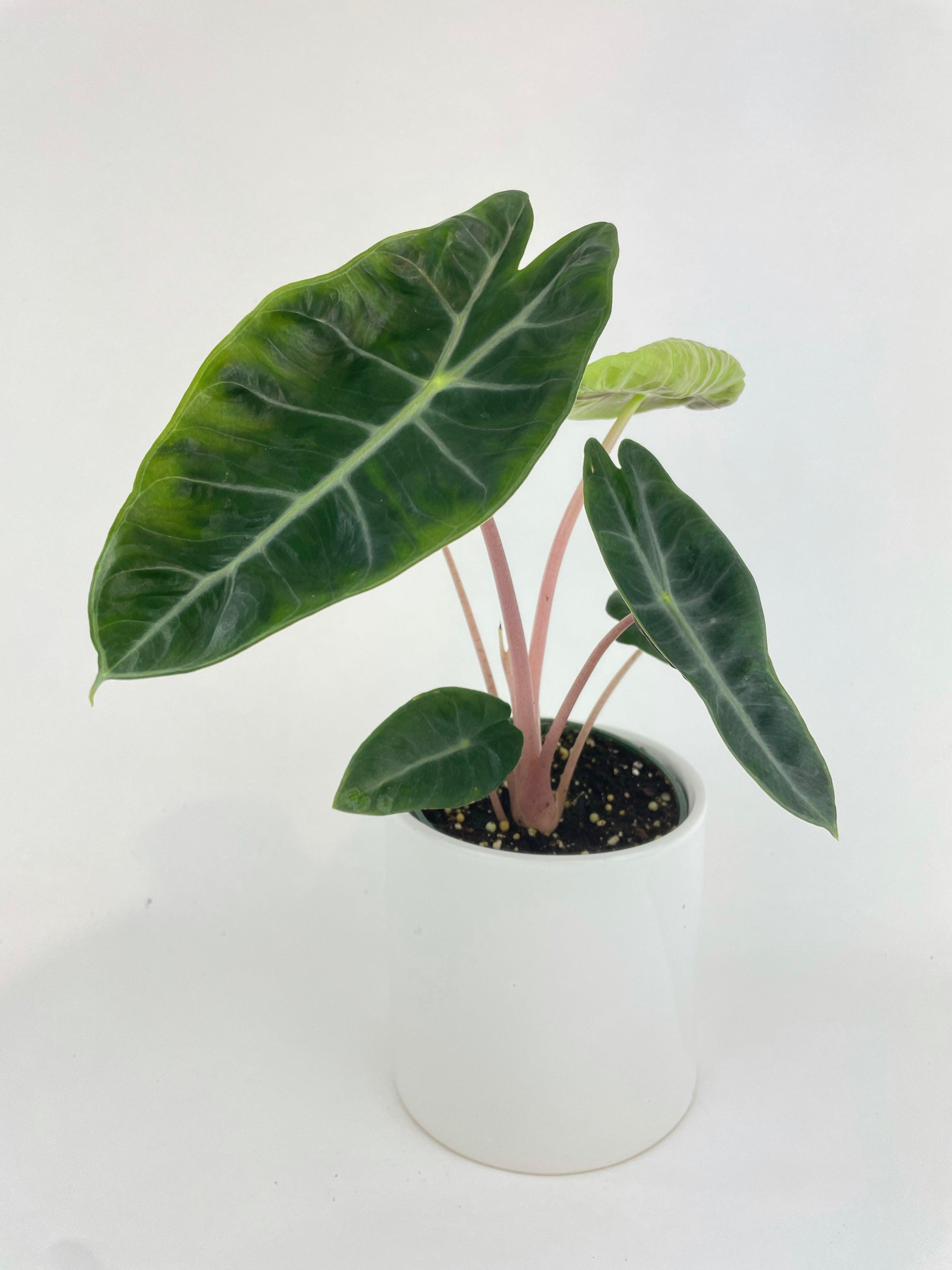Why My Houseplants Keep Dying
Houseplants add beauty and tranquility to any living space, but keeping them healthy can sometimes feel like a challenge. If you've ever wondered why your beloved houseplants seem to struggle or wither away, you're not alone. In this article, we'll explore the common reasons why houseplants fail to thrive and provide practical tips to help you nurture your green companions back to health.
Understanding Plant Care Basics
Caring for houseplants involves more than just watering them occasionally. It's about creating the right conditions for growth, which includes providing adequate light, water, and nutrients.
Importance of Proper Care Techniques
To keep your plants healthy, it's essential to learn about their specific requirements and tailor your care routine accordingly. Some plants may prefer indirect sunlight, while others thrive in bright, direct light. Understanding these preferences can help you create an ideal environment for each plant in your home.
Role of Environment in Plant Health
The environment plays a crucial role in determining the health and vitality of your houseplants. Factors such as temperature, humidity levels, and air quality can impact their growth and overall well-being.
Monitoring these environmental factors can help you identify any issues early on and take corrective measures to ensure your plants remain healthy. By understanding the basics of plant care and the role of the environment, you can lay a solid foundation for keeping your houseplants thriving and vibrant.
Signs of a Dying Houseplant
Recognizing when a houseplant is struggling is the first step toward addressing its needs and preventing further decline. By paying attention to subtle cues and changes in your plant's appearance and behavior, you can intervene early and help it bounce back to health.
Brown Leaf Tips: What They Indicate
One of the most common signs of stress or distress in houseplants is the browning of leaf tips. This can be caused by a variety of factors, including underwatering, overwatering, or low humidity levels. By identifying the underlying cause of browning leaf tips, you can take appropriate action to address the issue and prevent further damage to your plant.
Identifying Dead Leaves and Their Causes
Dead or yellowing leaves are another telltale sign that a houseplant is struggling. This could be due to nutrient deficiencies, pests, diseases, or environmental stressors. Regularly inspecting your plant for dead or dying leaves and removing them promptly can help prevent the spread of disease and encourage new growth.
Observing Plant Behavior for Clues
In addition to visual cues, paying attention to your plant's behavior can provide valuable insights into its health. For example, drooping or wilting foliage may indicate dehydration, while yellowing or stunted growth could signal nutrient deficiencies. By observing how your plant responds to its environment, you can better understand its needs and provide appropriate care.
By familiarizing yourself with the signs of a dying houseplant, you can take proactive steps to address any issues and create a nurturing environment for your green companions to thrive.
Overwatering: The Silent Killer
Overwatering is a common mistake that many plant owners make, often with devastating consequences for their houseplants. Understanding the signs of overwatering and how to remedy the situation is essential for maintaining healthy plants and preventing unnecessary stress.
Recognizing Excess Water Symptoms
One of the primary indicators of overwatering is soggy or waterlogged soil. Excess moisture around the plant's roots can lead to oxygen deprivation and root rot, compromising the plant's ability to absorb nutrients and water effectively. Other signs of overwatering may include yellowing leaves, wilting, or a foul odor emanating from the soil.
Impact of Poor Drainage on Plant Health
Proper drainage is crucial for preventing water from accumulating around the plant's roots and suffocating them. Houseplants should be potted in containers with drainage holes to allow excess water to escape freely. Without adequate drainage, plants are more susceptible to overwatering and the associated problems that can arise.
Strategies to Fix Overwatered Plants
If you suspect that your houseplant is suffering from overwatering, the first step is to assess the extent of the damage. Gently remove the plant from its pot and examine the roots for signs of rot or decay. Trim away any mushy or discolored roots and repot the plant in fresh, well-draining soil. Adjust your watering schedule to allow the soil to dry out between waterings, and avoid watering on a fixed schedule regardless of the plant's needs.
Underwatering: A Common Culprit
While overwatering is a prevalent issue among houseplant enthusiasts, underwatering can be equally detrimental to plant health. Recognizing the signs of dehydration in houseplants and implementing strategies to address them is essential for ensuring their survival and vitality.
Signs of Dehydration in Houseplants
Underwatering often manifests as dry, parched soil and wilting foliage. As the plant's water reserves become depleted, its leaves may become limp and lose their vibrant color. In severe cases, the plant may begin to shed leaves or exhibit signs of distress, such as browning leaf edges or curling foliage.
Importance of Consistent Watering Schedule
Establishing a regular watering schedule is crucial for preventing underwatering and ensuring that your houseplants receive the moisture they need to thrive. Take into account factors such as the plant's species, size, and environmental conditions when determining how often to water. Avoiding erratic watering habits can help maintain stable soil moisture levels and prevent dehydration.
Rescuing Thirsty Plants
If you suspect that your houseplant is suffering from dehydration, it's essential to act quickly to prevent further damage. Thoroughly water the plant, ensuring that the soil is evenly moistened and excess water drains away freely. Consider placing the plant in a location with higher humidity levels or misting its leaves to provide temporary relief.
Transplant Troubles: Why Plants Struggle
Transplanting houseplants is a common practice, whether you're repotting to refresh the soil or upgrading to a larger container. However, the process of transplanting can sometimes cause stress to the plant and lead to difficulties in adjustment. Understanding the challenges associated with transplanting and how to mitigate them is essential for promoting healthy growth and development in your houseplants
Understanding Transplant Shock
Transplant shock occurs when a plant undergoes stress as a result of being uprooted and moved to a new environment. This shock can manifest in various ways, including wilting, drooping foliage, and slowed growth. While transplant shock is a natural response to the disruption of the plant's root system, minimizing its impact is crucial for helping the plant recover quickly.
Factors Leading to Transplant Failure
Several factors can contribute to transplant failure, including inadequate preparation, improper handling of the plant, and environmental stressors. It's essential to carefully plan and execute the transplanting process to minimize stress and maximize the plant's chances of success. Choosing the right time of year, selecting an appropriate pot size, and ensuring proper soil preparation are all critical considerations.
Techniques to Minimize Stress During Transplanting
To minimize stress during transplanting, handle the plant gently and avoid disturbing its roots unnecessarily. Choose a new container that provides ample space for the plant's root system to grow and develop. Additionally, use a well-draining soil mix that provides the necessary nutrients and support for healthy root growth. After transplanting, monitor the plant closely for signs of stress and provide appropriate care and support as needed.
Light and Location: Finding the Balance
Proper lighting is essential for the health and vitality of houseplants, as it directly influences their ability to photosynthesize and grow. Understanding the light requirements of different plant species and optimizing their placement within your home environment is crucial for ensuring their well-being and longevity.
Effects of Direct Sunlight on Indoor Plants
Direct sunlight can be beneficial for many houseplants, providing them with the intense light they need to thrive. However, prolonged exposure to direct sunlight can also lead to sunburn and heat stress, particularly for more delicate plant species. Understanding the optimal balance of direct sunlight for your plants and providing shade or protection when necessary can help prevent damage and promote healthy growth.
Importance of Indirect Light for Different Species
Not all houseplants thrive in direct sunlight, and some may prefer the gentler, diffused light provided by indirect sunlight. Understanding the light preferences of your plants and selecting appropriate locations within your home can help ensure that they receive the optimal amount of light for their needs. Placing plants near windows or in well-lit rooms with indirect sunlight can help them thrive without risking sun damage.
Adjusting Light Exposure for Optimal Growth
Finding the right balance of light exposure for your houseplants may require some experimentation and adjustment. Pay attention to how your plants respond to their current lighting conditions and be prepared to relocate them if necessary. Rotating plants periodically can also help ensure that all sides receive adequate light and promote balanced growth.
Soil and Fertilization: Nourishing Your Plants
The quality of soil and the availability of essential nutrients are critical factors in ensuring the health and vitality of houseplants. Understanding the role of soil composition and the importance of fertilization can help you provide your plants with the nourishment they need to thrive.
Selecting the Right Soil Mix for Houseplants
Choosing the appropriate soil mix is crucial for promoting healthy root development and providing adequate drainage for your houseplants. Opt for a well-balanced potting mix that retains moisture while allowing excess water to drain freely. Avoid heavy or compacted soils that can suffocate the plant's roots and impede growth.
Choosing the Best Fertilizer for Different Needs
Fertilization provides plants with essential nutrients that may be lacking in the soil, promoting robust growth and vibrant foliage. Select a fertilizer specifically formulated for houseplants and follow the manufacturer's recommendations for application frequency and dosage. Avoid overfertilizing, as excessive nutrients can build up in the soil and lead to root burn or nutrient toxicity.
Frequency and Method of Fertilization
Establishing a regular fertilization schedule is essential for maintaining optimal plant health and vitality. During the growing season, fertilize your plants every 4-6 weeks with a balanced liquid fertilizer diluted to half strength. In the dormant season, reduce fertilization frequency to once every 8-12 weeks to accommodate the plant's reduced nutrient requirements.
Humidity and Air Quality: Creating the Ideal Environment
The level of humidity and the quality of air in your home environment can significantly impact the health and well-being of your houseplants. Understanding how humidity levels and air quality affect plant growth and implementing strategies to optimize these factors can help create an ideal environment for your plants to thrive.
Understanding Humidity Levels for Houseplants
Many houseplants, especially tropical species, thrive in environments with high humidity levels. Dry indoor air can lead to dehydration and stress for your plants, particularly during the winter months when humidity levels tend to drop. Consider increasing humidity levels around your plants by using a humidifier, placing a tray of water-filled pebbles beneath their pots, or misting their foliage regularly.
Effects of Air Conditioning on Indoor Plants
Air conditioning systems can help regulate temperature and humidity levels in your home, but they may also have unintended consequences for your houseplants. Cold drafts and dry air from air conditioning vents can stress your plants and cause leaf damage or dehydration. Position your plants away from air vents and drafty areas, and consider using a humidifier to counteract the drying effects of air conditioning.
Improving Air Quality for Plant Health
ndoor air quality can also impact the health of your houseplants, as they rely on clean air to breathe and absorb nutrients. Reduce indoor air pollution by avoiding the use of chemical cleaners and air fresheners, and consider incorporating air-purifying plants into your indoor garden. Regularly dusting and wiping down your plant leaves can also help improve air circulation and prevent the buildup of dust and debris.
By paying attention to humidity levels and air quality in your home environment, you can create a healthy and supportive atmosphere for your houseplants to thrive and flourish.
Pests and Diseases: Identifying Threats
Pests and diseases pose significant threats to the health and well-being of your houseplants, potentially causing irreversible damage if left unchecked. Understanding the common pests and diseases that affect indoor plants and implementing proactive measures to prevent infestations and infections is essential for maintaining a thriving indoor garden.
Common Pests Found in Houseplants
Houseplants are susceptible to a variety of pests, including aphids, mealybugs, spider mites, and scale insects, among others. These pests feed on plant sap, weaken the plant's immune system, and can spread diseases. Regularly inspect your plants for signs of pest infestations, such as sticky residue, distorted foliage, or visible insects, and take prompt action to address the problem.
Recognizing Signs of Disease and Infection
In addition to pests, houseplants can also fall victim to various fungal, bacterial, and viral infections. Common signs of plant disease include yellowing or browning leaves, wilting foliage, and unusual growth patterns. Proper sanitation practices, such as sterilizing tools and pots, and avoiding overwatering can help prevent the spread of disease and keep your plants healthy.
Preventive Measures and Treatment Options
Preventing pest infestations and disease outbreaks is often more effective than trying to treat them once they occur. Implement preventive measures such as regularly inspecting your plants, quarantining new additions to your indoor garden, and maintaining good hygiene practices. If pests or diseases do strike, consider using natural remedies such as insecticidal soap or neem oil to control infestations and minimize damage to your plants.
Reviving a Dying Houseplant: Tips and Tricks
Despite your best efforts, there may come a time when one of your houseplants starts to show signs of distress or decline. Reviving a dying plant requires patience, observation, and a willingness to experiment with different techniques to determine what works best for your specific plant and situation.
Step-by-Step Guide to Revitalize a Sick Plant
Start by assessing the plant's condition and identifying the underlying cause of its decline. Is it suffering from overwatering, underwatering, nutrient deficiencies, or pest infestations? Once you've pinpointed the problem, take appropriate action to address it, such as adjusting your watering schedule, repotting the plant, or treating it with organic remedies.
Patience and Persistence in Plant Care
Reviving a dying plant is not always a quick or straightforward process. It may take time for the plant to respond to your efforts, and setbacks may occur along the way. Be patient and persistent in your care routine, and don't be afraid to seek advice from fellow plant enthusiasts or gardening experts if you're unsure how to proceed.
Celebrating Successes and Learning from Failures
As you work to revive your dying plant, celebrate small victories along the way, such as new growth or improved vitality. Take note of what methods and techniques seem to work best for your plant and incorporate them into your ongoing care routine. At the same time, don't be discouraged by setbacks or failures—view them as opportunities to learn and grow as a plant parent.
Conclusion
Nurturing healthy houseplants is a journey filled with learning and discovery. By understanding the needs of your plants and creating a supportive environment, you can overcome common challenges such as overwatering, underwatering, and inadequate light. Remember to pay attention to signs of distress and take proactive measures to address them promptly. Celebrate the successes along the way and embrace the opportunity to learn from any setbacks. With patience, persistence, and a genuine love for your green companions, you can create a flourishing indoor garden that brings joy and beauty to your home. Let your journey as a plant parent be guided by curiosity, compassion, and a desire to cultivate thriving ecosystems within your living space.










































